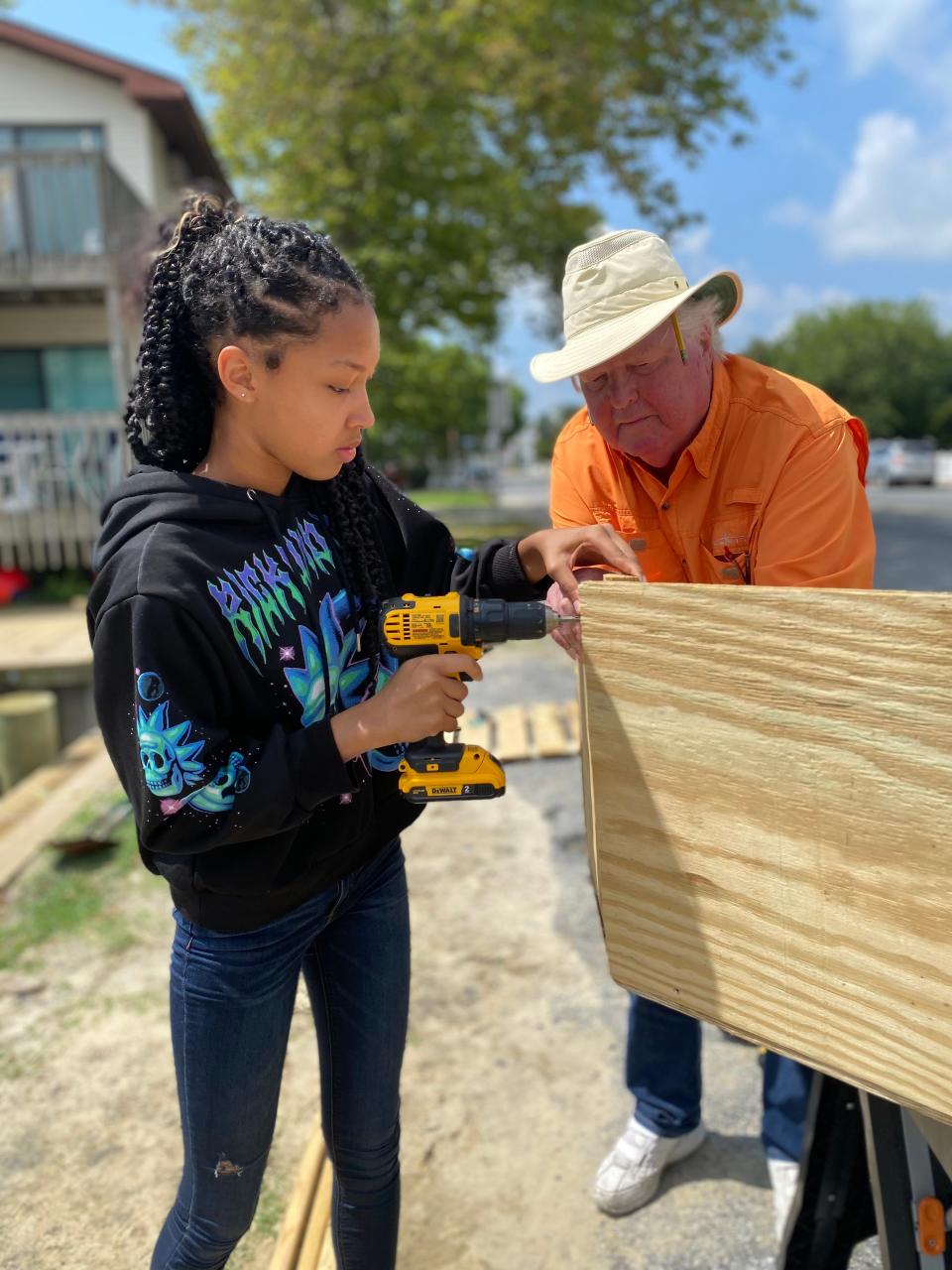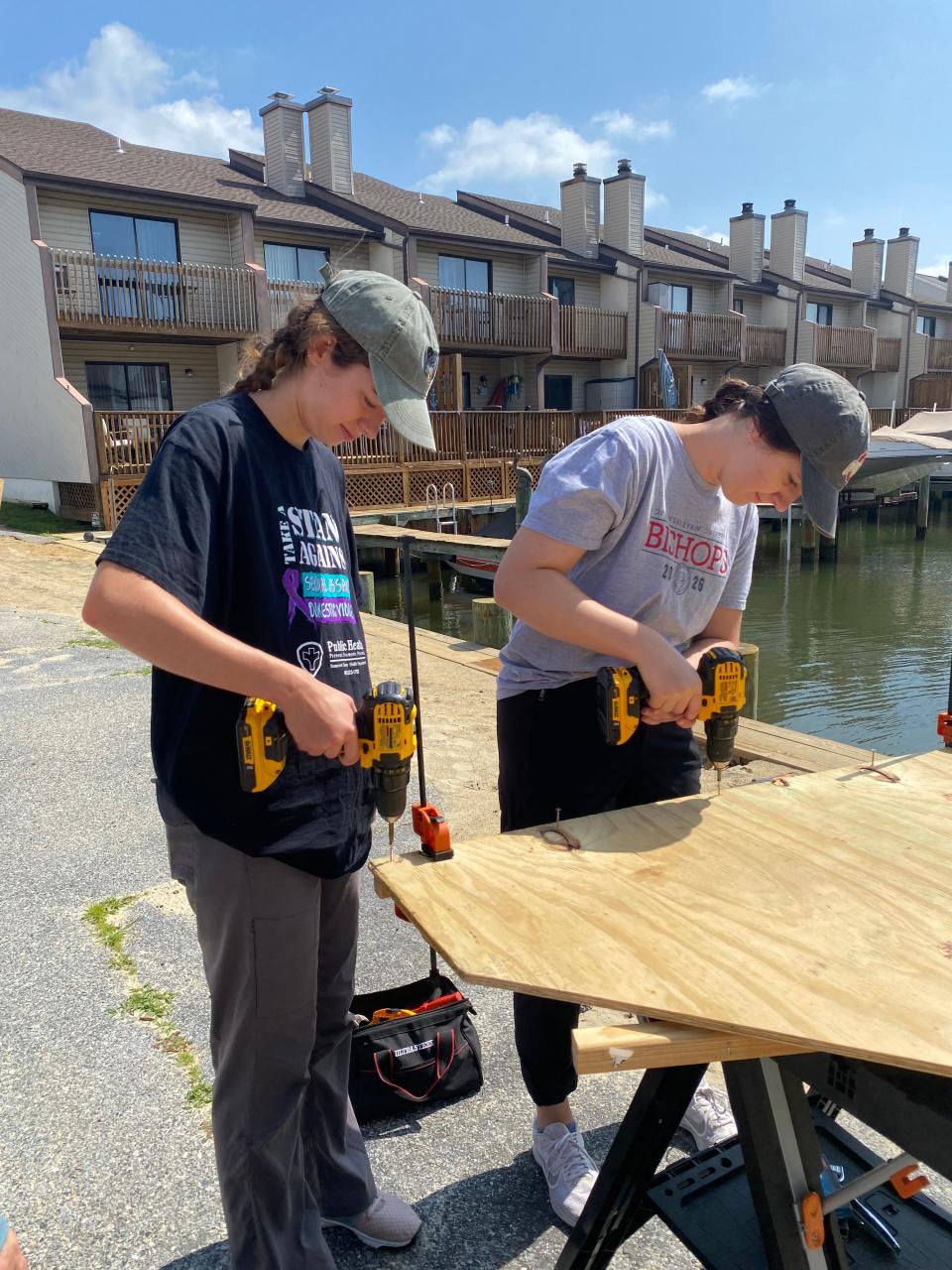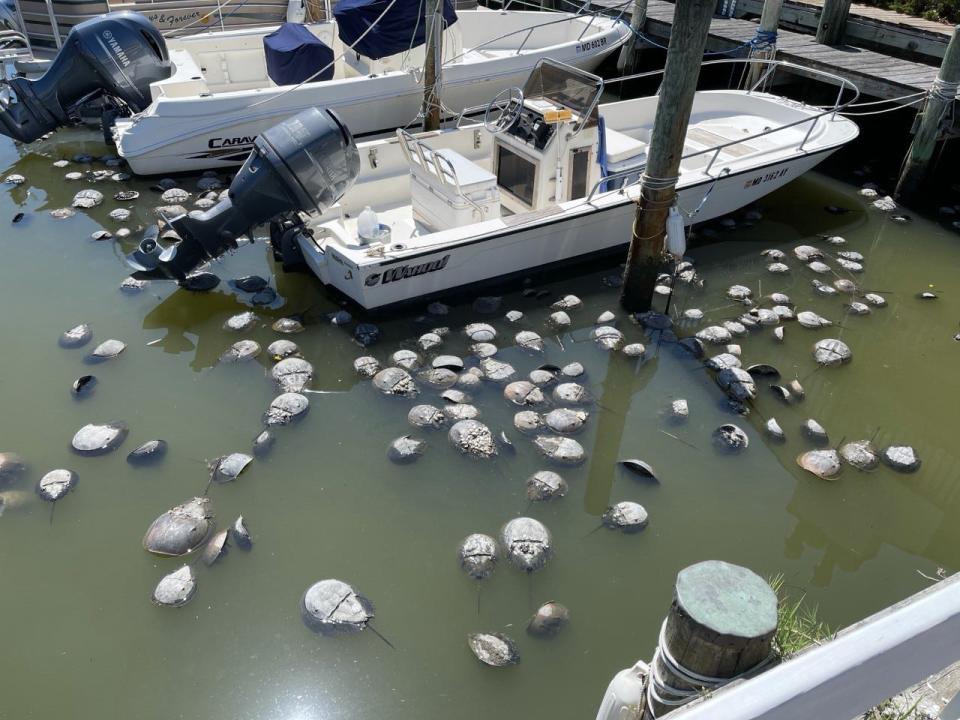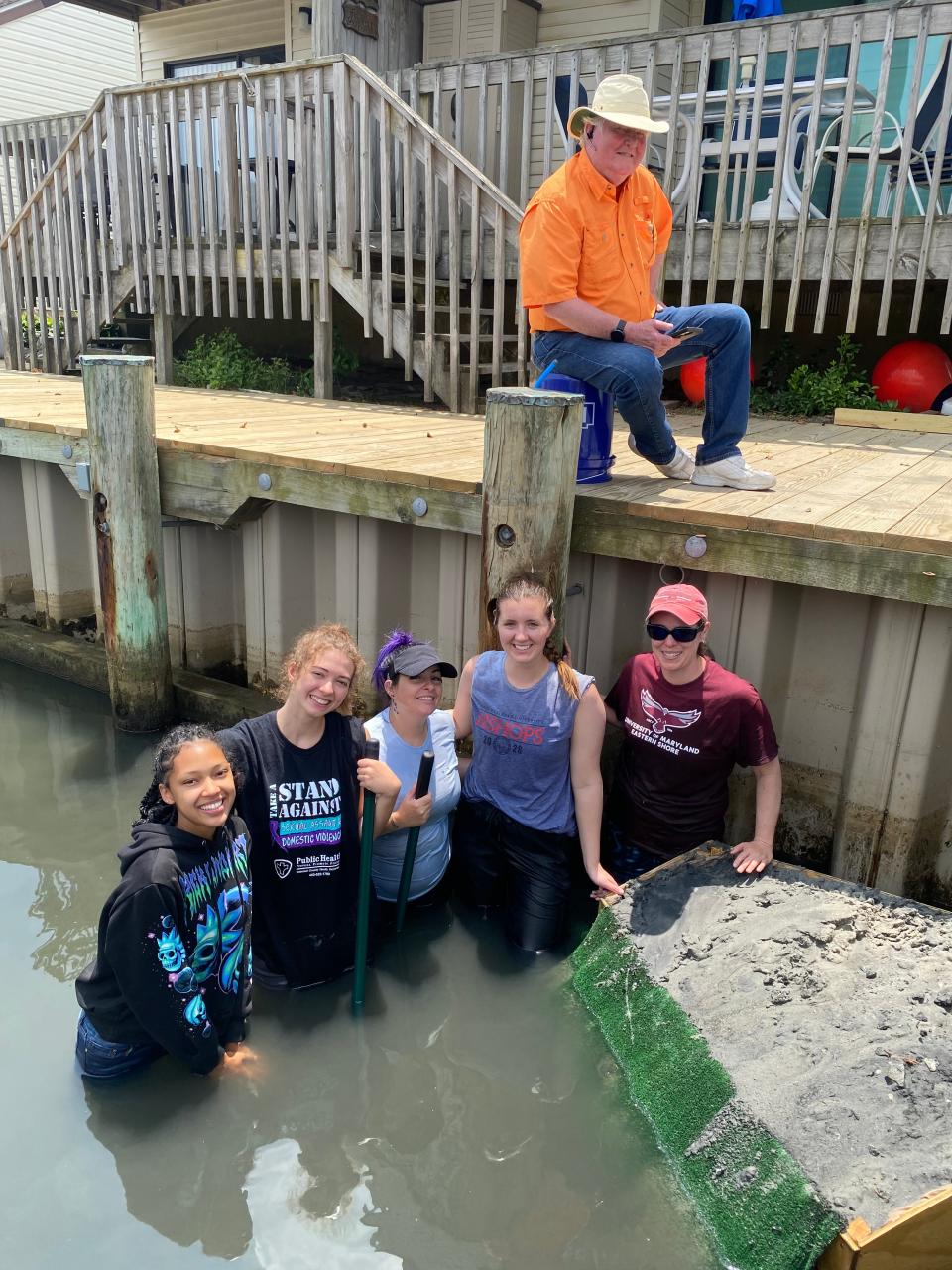Horseshoe crabs get new lifeline in Ocean City with help from UMES students
For the countless horseshoe crabs that trek up Ocean City's 94th Street canal, a successful spawning period could be the difference between sustaining or losing the species entirely.
Research that started with simply trying to calculate the bacteria levels of the canal's stagnant water soon pivoted to the plight of female horseshoe crabs looking for the comfort of a muddy shore. What normally follows is a spawning period complete with a male attached to the female as she lumbers to a spot in the sand.
The problem is mankind itself, with the construction of high-walled bulkheads and development along the shore that is quickly taking away large swaths of their territory. Ironically, the answer may also be mankind with the construction of artificial beach platforms for the crustaceans that keep them from trying to climb commercial obstacles and dying in the process.
"Horseshoe crabs are looking for habitat and they're looking for a sandy or muddy beach that is getting wet daily between the high and low tide line where they lay their eggs. The eggs they spawn are an important source of nutrition for migratory shore birds," said Margaret Sexton, research assistant professor of Biological Oceanography at the University of Maryland Eastern Shore and deputy center director for the NOAA Living Marine Resources Cooperative Science Center.

The home plate-shaped platform measures a compact 4 feet by 2 feet by 5 feet. Once it is filled with sand and soaked, it quickly becomes an ideal spot for the species. While there is only one built thus far in the canal, it has already proven to attract the crabs despite eggs not yet found on the structure.
While there are other suitable areas where they can spawn, the 94th street canal seems to draw the primal-looking crabs every year. The question is why.
"They've had over nearly 400 million years of evolution, and as they do so, they acquire characteristic traits like developing specific spawning habitats. I suspect they use these coastal lagoons as a safe place free from waves crashing onto a shore and to be in a quiet place. When the young hatch, they don't have to face the same predation," said Eric May, professor of Fish Biology & Pathology in the Department of Natural Sciences at the University of Maryland Eastern Shore.
As with most biological research, the goal is data collection to surmise long-term application of these platforms elsewhere.
More on crab bleeding Horseshoe crabs help save human lives, so why do we treat them so bad?
More on the 2021 mortality event How 1,000-plus dead horseshoe crabs ended up in an Ocean City canal
Mortality events and new conservation efforts

For residents of Ocean City, July 2021 saw thousands of the horseshoe crabs floating in the inland canals. Reports to the Maryland Coastal Bays Program led to an investigation.
It was clear the crabs were entering the canals alive, with many of the dead being females in search of spawning locations and being met only with literal walls. Water quality in the canal, while not entirely to blame, exacerbated the mortality event.
High temperatures of the water and the suffocating nature of the low-dissolved oxygen, or dead spots, in the water at night also spelled doom for the crabs.
According to UMES, underscoring the importance of the conservation efforts will require public support. Reaching out to Ocean City residents has already created a new level of awareness of the university's efforts and establishes a prolonged future for the pilot program.

"Most of our public outreach has been word of mouth. We've spoken to several pf the neighbors and we've gotten very positive response to us being there," Sexton said "One thing we're attempting to do is having those who live on these canals let us know if and when we have mortality events of horseshoe crabs. That doesn't seem to have happened this year, so it would help of the public reported that to us to create a record of it to figure it out."
May noted while similar conditions persisted in 2022, other stressors on the population were not present, and that made it a rebounding year for the species. While there is no exact number of the species now, 60 have been tagged from the 94th Street canal.
"The Maryland Coastal Bays Program has been doing a spawning survey for nearly 20 years, but that tells us how many more or less compared to previous years, but not really the total number of these crabs," Sexton said.
Controversial medical testing?

In spite of possibly declining numbers, the practice of drawing blood from horseshoe crabs continues.
The Maryland Department of Natural Resources noted "the blood of the horseshoe crab provides a valuable medical product critical to maintaining the safety of many drugs and devices used in medical care. A protein in the blood called Limulus Amebocyte Lysate is used by pharmaceutical and medical device manufacturers to test their products."
The goal is to detect the presence of endotoxins, bacterial substances that can cause fevers and even be fatal to humans.
A horseshoe crab's blood has a blue to blue-green color when exposed to the air. The blood is blue because it contains a copper-based respiratory pigment called hemocyanin.
More on crab migrations in the past There's so many horseshoe crabs invading Maryland, Delaware shores right now. Here's why
Yet despite the benefits of the research, the practice is drawing the ire of environmental groups. That even prompted the creating of a petition already signed by an estimated 35,000 people to stop "given the population decline of horseshoe crabs and no state-wide bans on the bleeding."
According to Change.org data, in February 2023, the U.S. Pharmacopeia, the organization responsible for setting standards for medicines produced in the U.S., held a meeting to set standards for a synthetic alternative that could take the pressure off of the horseshoe crab population — but five months have elapsed since the meeting, and advocates are demanding answers.
This sparked outcry from Carrie Anne, an activist and Florida resident, and her supporters, who are demanding that the USP issue standards for the synthetic alternative, which would facilitate companies moving off of live crab blood.
"The count of horseshoe crabs that bled alive has surpassed 700,000, with up to 30% of them dying in the process, pushing them closer to the brink of becoming an endangered species," the petition argued.
This article originally appeared on Salisbury Daily Times: UMES research gives horseshoe crabs new lifeline in Ocean City

